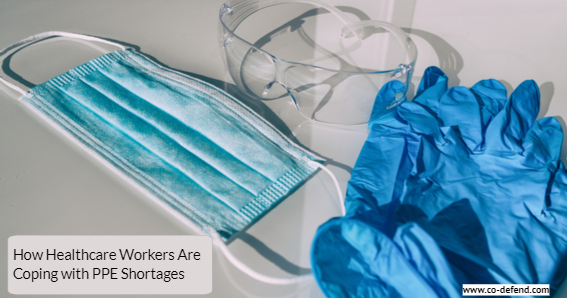Vaccinations across the U.S. are speeding up. More than 27 million Americans have received a first vaccine dose, as of this writing. However, amid hope for a brighter spring and summer, health experts have remained largely pessimistic about the coming months. Several experts have warned that we’re nowhere near the end of a pandemic that has killed 450,00 people in the U.S. alone.
Poorer countries are lagging far behind in their immunization efforts. Besides, even within the U.S. vaccination, progress has been anything but smooth and uniform. All these mean that we cannot let our guard down just yet. COVID safety measures like mask-wearing, personal hygiene, and social distancing must continue. Whether it’s about providing medical protective clothing to health workers or wearing a mask, we need to continue the fight. In this blog post, we’ll discuss how healthcare workers are coping with the persisting PPE shortages.
PPE production for health workers
From treating COVID-19 patients in intensive care units to rolling out the vaccination drive, health workers are always at the front line. Health officials and personal protective equipment companies recognized their crucial role early in the pandemic. Safeguarding medical professionals requires a host of medical protective clothing designed to work in high-risk environments.
For high-risk environments, PPE needs high-efficiency filters. For example, health workers need N95 respirators. Since the virus particles are extraordinarily tiny, face masks need to have high-efficiency filters. But such filters are not produced at a rate personal protective equipment companies need. It, therefore, leads to slower production and the supply chain challenges the industry is facing in the pandemic era.
Dealing with the PPE supply chain crisis
Since the beginning of this unprecedented crisis, most health care facilities are scrambling to get enough PPE. Unfortunately, even after a year, the crisis is not over yet. Despite extraordinary efforts by bulk PPE suppliers in the USA and government agencies, the PPE shortage persists. And it’s not just the U.S. that’s facing this crisis. Even European countries are struggling to get enough protective equipment for their front-line workers.
However, after extraordinary ramping up of production by multiple leading personal protective equipment companies, the shortage gradually got less intense. The U.S. government introduced multiple policies and programs to encourage companies to scale up their medical device production. Even companies outside the medical equipment industry were asked to make PPE and medical devices like ventilators. It helped significantly to address the PPE supply shortage.
Face shield, protective gown, and N95 production
Face shields, masks, and medical protective clothing are top requirements among health workers. Medical device manufacturers are relying on high-tech processes like 3D printing to scale up their production. Besides, many countries have revised their regulatory mechanism in the wake of the pandemic’s fallouts. It has helped companies to quickly release devices and PPE to the market.
Personal protective equipment companies are adopting new strategies to meet the soaring demands. Medical equipment makers are identifying material suppliers and defining scalable methods to ramp up manufacturing. Companies are forming new collaborations within and outside their industries to find innovative manufacturing solutions.
Medical protective clothing and other equipment like N95 respirators and surgical face masks are central to slowing the spread. Government agencies like the CDC have been actively monitoring the situation. For instance, it recommends adopting a contingency mode for saving medical protective equipment. The agency also canceled non-emergency procedures and outpatient services during the peak of the pandemic.
Health workers have been using face makes other PPE beyond the manufacturer-defined shelf life. Limited reuse of medical protective clothing has, in part, helped many care facilities cope with the ongoing crisis. These strategies were implemented even during the post-holiday season surge in hospitalizations.
Conclusion
Health workers in hospitals and nursing homes have urged the Biden administration to use the Defense Production Act to accelerate PPE manufacturing. Health experts fear that the optimism prompted by vaccines will overshadow the persisting PPE crisis across the U.S.
The alarming PPE shortage forced health workers to ration their use of N95s, disposable gloves, and gowns. Many of these shortages are due to a sudden surge in global demands. But with strategic partnerships and innovative production methods, personal protective equipment companies are responding to this shortage. At Co-Defend, one of the most trusted wholesale PPE suppliers, we have helped customers across the U.S. to fight the pandemic with efficient products.
